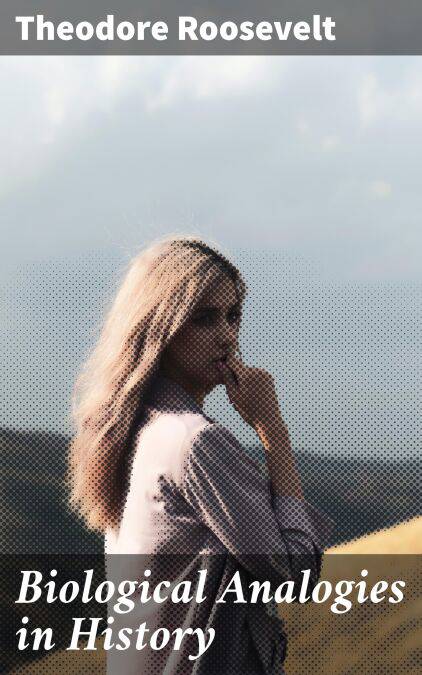
- Afhalen na 1 uur in een winkel met voorraad
- Gratis thuislevering in België vanaf € 30
- Ruim aanbod met 7 miljoen producten
- Afhalen na 1 uur in een winkel met voorraad
- Gratis thuislevering in België vanaf € 30
- Ruim aanbod met 7 miljoen producten
Zoeken
Biological Analogies in History E-BOOK
Unveiling Evolutionary Insights in Historical Narratives
Theodore Roosevelt
E-book | Engels
€ 1,99
+ 1 punten
Omschrijving
In 'Biological Analogies in History' by Theodore Roosevelt, the author explores the idea of applying biological principles to understand historical events. Through thought-provoking comparisons and analyses, Roosevelt demonstrates the intricate connections between the evolution of species and the development of civilizations. His writing style is both informative and engaging, blending scientific concepts with historical narratives. This book is a unique contribution to the field of history, offering readers a new perspective on the forces that shape human societies. Roosevelt's use of biological analogies adds a fresh dimension to our understanding of the past, encouraging readers to think critically about the complexities of history. Drawing parallels between natural selection and societal change, Roosevelt challenges conventional interpretations of historical events, inviting readers to reconsider familiar narratives. 'Biological Analogies in History' is a must-read for those interested in interdisciplinary approaches to studying the past, as well as anyone seeking a deeper understanding of the underlying mechanisms of historical transformation.
Specificaties
Betrokkenen
- Auteur(s):
- Uitgeverij:
Inhoud
- Aantal bladzijden:
- 33
- Taal:
- Engels
Eigenschappen
- Productcode (EAN):
- 4064066443351
- Verschijningsdatum:
- 10/04/2021
- Uitvoering:
- E-book
- Beveiligd met:
- Digital watermarking
- Formaat:
- ePub

Alleen bij Standaard Boekhandel
+ 1 punten op je klantenkaart van Standaard Boekhandel
Beoordelingen
We publiceren alleen reviews die voldoen aan de voorwaarden voor reviews. Bekijk onze voorwaarden voor reviews.








